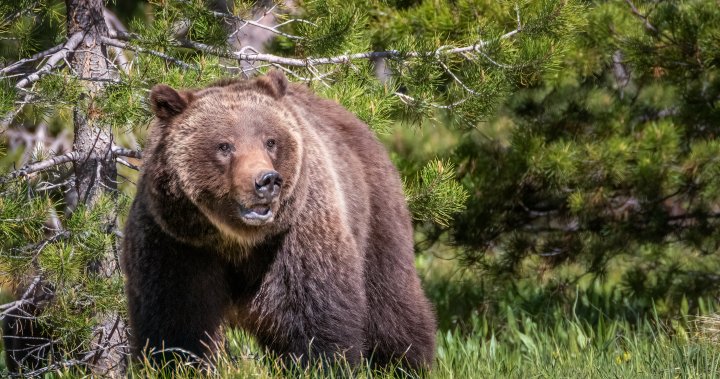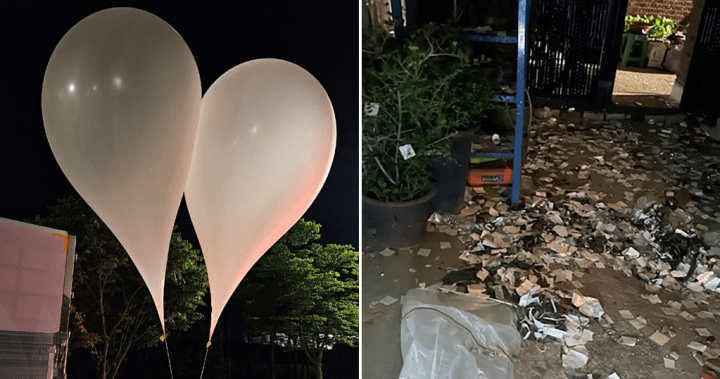It’s the first painted portrait to be revealed of King Charles III since his coronation just over a year ago and to say it’s stirring up mixed reactions would be an understatement.
The oil painting, by renowned portrait artist Jonathan Yeo, was unveiled at Buckingham Palace Tuesday and features the monarch staring head-on against a backdrop of red and pink hues. Charles is depicted in the uniform of the Welsh Guards, of which he was made regimental colonel in 1975 (Prince William now holds that title). The King’s hands are clasped atop the hilt of his sword and a monarch butterfly hovers over his shoulder.
The piece is as large as it is striking, measuring 8.5 feet by 6.5 feet. It was commissioned in 2020 by the Drapers’ Company, the livery company for the City of London that collects royal portraits.
The piece, which was unveiled by Charles and Queen Camilla, has elicited strong reactions from art critics, royal watchers and the broader public.
The BBC described the painting as “vivid,” while People magazine went with “fiery.” The Times of London’s chief art critic, Laura Freeman, was less charitable, calling it “curiously unthrusting.”
Britain’s Queen Camilla watches as Britain’s King Charles III unveils an official portrait of himself, by artist artist Jonathan Yeo, depicting the King wearing the uniform of the Welsh Guards, of which he was made regimental colonel in 1975.
Aaron Chown / Pool / AFP via Getty Images
“Has a portrait of a blue-blooded British monarch ever been so very pink?” she continued. “Our Charles quite literally fades into the background, his sleeves little distinguished from the scumbled ground. Pomp? Circumstance? This is a king signalling that he is content to be a wallflower, albeit of the hothouse variety. Won’t impose, mustn’t meddle.”
Breaking news from Canada and around the world
sent to your email, as it happens.
The Guardian’s art writer, Johnathan Jones, was similarly critical: “A serious portrait would look hard and long at Charles (or anyone), not combine facile pseudo-portraiture with the cheery serotonin of random colour. We all know the king is more complex than this,” he wrote.
Online, many went right for the jugular, too, saying the red hues of the painting stirred up memories of Britain’s violent colonial past.
“I’ve never seen a more appropriate official portrait,” one person on X wrote. “King Charles III is soaked with blood from centuries of British colonialism.”
Art historian Richard Morris said on X, “I really like the portrait… before photography, to have a great painter capture your real appearance you accepted the revelation of your flaws and your mortality. It’s what Yeo captures here.”
Yeo, who began the project while Charles was still the Prince of Wales, had four sittings with the King and also worked from drawings and photographs, Buckingham Palace said.
The painting will be exhibited to the public from May 16 to June 14 at the Philip Mould Gallery in London. It will later hang at Drapers’ Hall from the end of August alongside other royal portraits.
It’s reported that the King and Queen are happy with the depiction, with Yeo telling the BBC that Camilla said “yes, you’ve got him,” after seeing the result.
On his website, Yeo said the vivid reds, fuchsias and pinks used are “not only resonating with the royal heritage found in many historical portraits but also injecting a dynamic, contemporary jolt into the genre with its uniformly powerful hue — providing a modern contrast to more traditional depictions.”
He also told the Times that the butterfly, which serves as a reference to the King’s lifelong commitment to the environment, “works as a counterpoint to the military steeliness of the sword so it’s a little visual device,” and that it took on additional meaning when Charles ascended to the throne.
“When he changed jobs halfway through the process it added resonance because you had a butterfly in art history as a symbol of metamorphosis.”
© 2024 Global News, a division of Corus Entertainment Inc.






